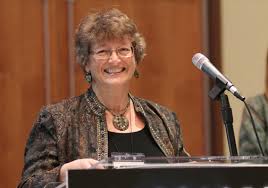Worldly matters

Jew in the Christian World
Jewish Family Education with Candace R. Kwiatek, The Dayton Jewish Observer
The most widely-known images of the afterlife are ancient Egypt’s impressive mummies, statues, and tomb paintings.
Their purpose was to maintain, nourish, and guide the human’s spiritual essence — still attached to the body — in an afterlife that mirrored earthly existence. They hint at elaborate rituals surrounding preservation of the dead body and regular offerings of food and drink for the blissful eternal life limited to pharaohs and nobles.

In early Egyptian culture, average persons were doomed to a shadowy, bleak eternity, but long before Moses, Egyptian beliefs about the hereafter evolved to include everyone.
The ancient Egyptian bible, the Book of the Dead, describes a perilous underworld journey, a final judgment known as the “weighing of the heart,” a lake of fire or crocodile-faced devourer of the condemned; and an Eden-like “Field of Rushes” where the worthy live forever with the gods.
Unlike the Egyptian notions of the afterlife, Western religious traditions about what comes next are not detailed in their foundational religious texts.
Heaven and Hell are nowhere mentioned in the Torah: biblical rewards and punishments are concrete and immediate events in the real world, not abstract futuristic ones.
At the same time, it describes the righteous as “gathered to their people” and sinners as spiritually “cut off” from their people — events separate from death or burial — biblical evidence of some sort of existence after death.
The earliest mentioned biblical afterlife destination is Sheol. A nebulous place where all the dead congregate, cut off from God and humankind, it is variously described in the Hebrew Bible as a dark, dusty, sleepy place of forgetfulness deep in the earth.
There, people are shadows without knowledge or feeling. While a possible precursor to the notion of an underground Hell, Sheol is not a place of judgment or retribution as in the modern concept.
According to some scholars, it may represent the traditional family grave. The New Testament adds little beyond a few scattered descriptions of Hell as fire, pits of darkness, and torment.
It turns out that Western culture’s conceptions of Heaven and Hell were fueled by medieval and early Renaissance art. Because the Church was their most frequent patron, the visual and sculptural arts of these eras reflected Christian teachings — primarily the promise of life after death and the consequences of sin — targeted to the largely illiterate populations.
Abundant depictions of Heaven as an ecstatic place in the clouds where holy figures, family members, and all the redeemed eternally reside with God provided an incentive for moral behavior and acceptance of Jesus as one’s personal savior.
The counterpoint was initiated by Dante’s 14th-century Divine Comedy, which sparked an explosion in apocalyptic representations of the tortures awaiting wrongdoers.
Among the most famous are Fra Angelico’s imagery of Satan eating sinners in The Pains of Hell, Hieronymus Bosch’s triptych of sins and retribution in Garden of Earthly Delights, and Rodin’s sculptural Gates of Hell.
Such images were warnings about the consequences of sin: punishment in the afterlife and possible eternal damnation.
While Judaism has always accepted the notion of an afterlife, Jewish concepts of Heaven and Hell began to develop during the reign of the Maccabees (1st and 2nd centuries BCE), offering hope in an otherworldly life beyond that of physical defeats, destruction, and exile.
Influenced by Hellenistic views of a separate body and soul, some rabbis of the Talmud portrayed the afterlife as a spiritual existence in which the righteous bask in the light of the Torah and the radiance of the Divine Presence (Berakhot 17a).
Elsewhere in the Talmud, scholars described the righteous soul’s reward as paradise or Gan Eden (Garden of Eden), and the evil soul’s punishment as Hell or Gehinnom, the fiery Jerusalem valley of ancient child sacrifice, a temporary stopping place for all but the most wicked.
The Jewish philosopher Philo explained that the soul, imprisoned in an earthly body until it dies, returns to God if it is righteous, or suffers eternal death if wicked.
In Kabalistic literature, the wicked soul is punished in Hell and then reincarnated until it completes its assigned task, after which it returns to God.
Jewish folklore offers some humorous views on the afterlife. In Heaven, one story recounts, Moses sits and teaches Torah all day long. For the righteous this is heaven; for evil people it is Hell.
Another tale describes the afterlife as a perpetual banquet where the guests cannot bend their elbows. In Hell the guests are always starving, while in heaven the guests feed each other.
Although seldom apparent in biblical literature, infrequently discussed by the rabbis of the Talmud, and unregulated by doctrine, belief in an afterlife has always been integral to Jewish theology.
Perhaps the limited attention reflects a rejection of the death-centered culture of Egypt. Or maybe it’s just a reminder that this world matters.
Literature to share
Quiet by Susan Cain: My new favorite non-fiction work, Quiet explores the undervalued traits and strengths of introverts, illustrating the challenges and opportunities that face them in our culture that celebrates the extrovert. Engaging and eye-opening, this award-winner is a must-read if you want to understand yourself and the people around you better.
The Apple Tree’s Discovery by Peninnah Schram and Rachayl Eckstein Davis: Based on a Jewish folk tale, this charming story for preschoolers explores the ageless desire to be like others and the importance of recognizing and being grateful for one’s unique gifts and strengths. This perfect autumn read suggests myriad apple-related activities, from picking to tasting to cooking and even crafting.
Note: To see a short but fascinating slide show describing the influence of art on Western traditions of Heaven and Hell, click here.
To read the complete October 2015 Dayton Jewish Observer, click here.


